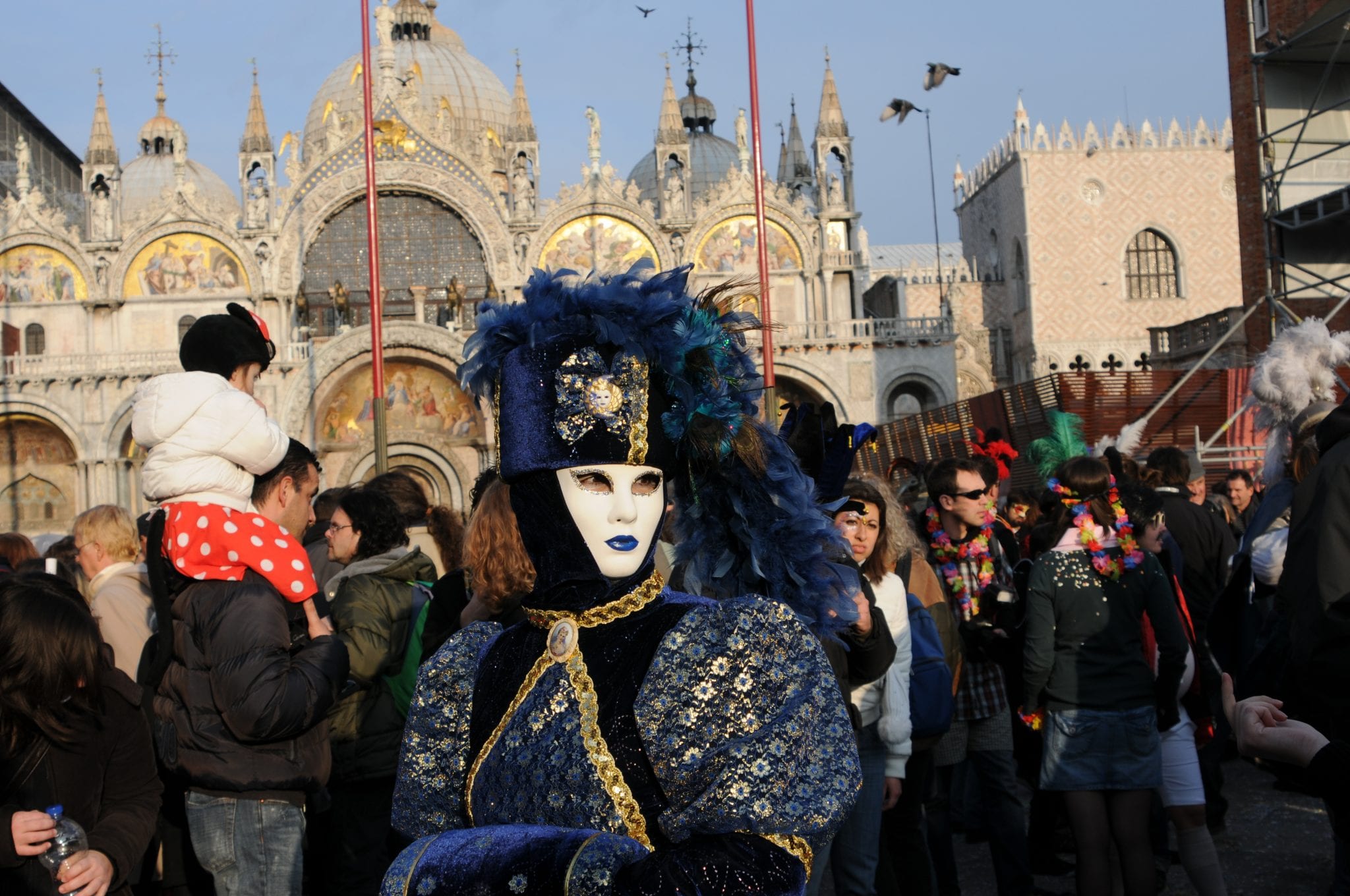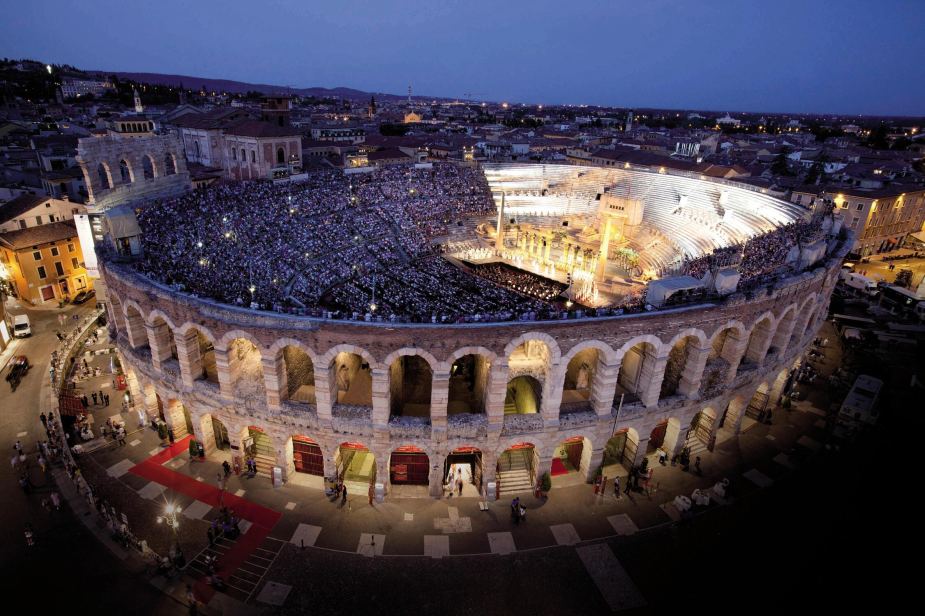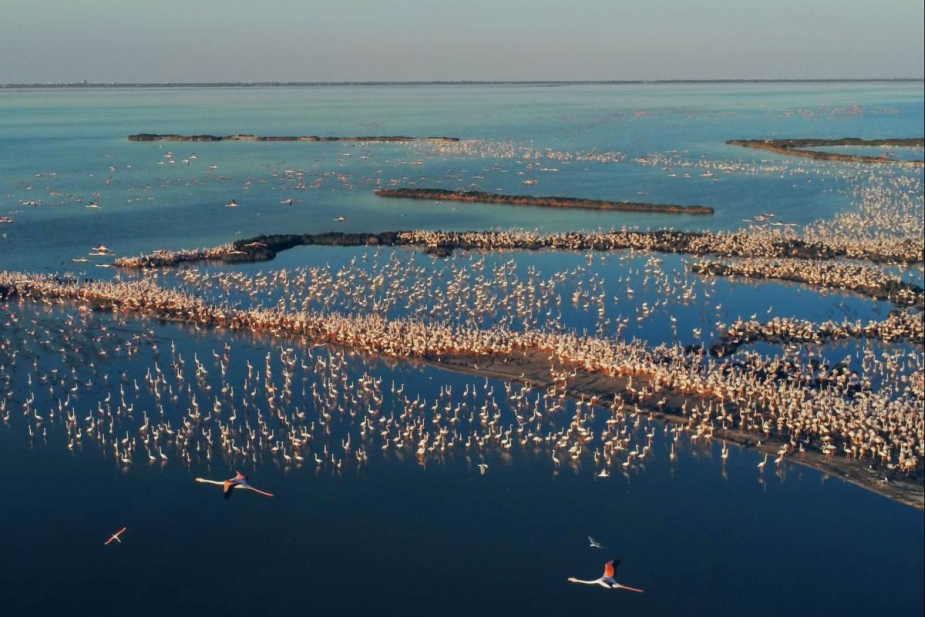
Location Spotlight: Veneto - It's Not Just Venice

20 Red Lights will offer to foreign productions an idea for where in Italy to set their projects, through articles based on its regions. Today is Veneto's turn.
Veneto is the 8th largest region in Italy, located in the north-east and bordered by Austria. In a territory of just 210km in length, there are all the beauties of nature and the greatest artistic peaks reached by man. In Veneto you can admire the world from the top of the Dolomites or lose yourself in the blue of a sea rich in history, travel through the ages along the city streets, or enjoy the healthy air of its lakes.
Veneto also has cities of art known all over the world such as Venice, Verona, Vicenza, Padua and Treviso, a long coastline of golden sand where renowned seaside resorts are located, Lake Garda and numerous other stretches of water, the mountain chain Dolomites, ancient spas and some of the most prestigious wine areas in Italy, such as Valpolicella and Prosecco.
The millenary culture of a region is added to the natural and historical-artistic beauties of Veneto. Day after day, this culture continues to enrich itself and to fascinate both those who experience it every day and those who visit it for the first time. In seven millennia, the Veneto region has collected some of the greatest historical and artistic testimonies of humanity, becoming an unparalleled cultural basin in the Peninsula and one of the most sought-after destinations in the world. The oldest finds belong to the Verona area and consist of thousands of petroglyphs scattered along the eastern coast of Garda. Even the Paleo-Venetian civilization, located in the centers of Este and Padua during the Iron Age, proved to be very generous in terms of finds and left us various ceramic and bronze objects.
Venice is universally considered one of the most beautiful cities in the world, for its urban peculiarities and for its artistic heritage. It was declared, together with its lagoon, a UNESCO World Heritage Site, which has contributed to making it the second Italian city after Rome with the highest tourist flow.
A fascinating lagoon city with an undisputed maritime power in the past, Venice is a place where the senses prevail over rationality - one of the most beautiful and romantic cities in the world - where you can get lost, love and let yourself be seduced among its alleys and canals. There is no stronger emotion than crossing the city on a gondola to observe in the distance ancient buildings almost emerging from the water between its bridges and countless characteristic inns, experiencing the thrill of the past, retracing the secret places of Casanova and discovering the scenarios of numerous stories that were set in La Serenissima.
To determine such an impressive tourist attendance of historic Venice is its universal fame as one of the most beautiful cities of art, but also the extraordinary nature of the environment, with the conditioning presence of water that intersects between 118 islands connected by over 400 bridges and on which much of the city life takes place.

Events with a large following also attract tourists, such as the inimitable Carnival (second photo on the right), the historical Regatta of Canal Grande, the Festa del Redentore and that of the Ascension, as well as prestigious cultural events such as the Art Biennale, or the International Film Festival, for which Venice is considered one of the capitals of European cinema, together with Cannes and Berlin.
There are many ways to experience the Venetian folklore, even without a calendar in hand: there are in fact the numerous peasant festivals with the typical products of the areas and seasons (that of the asparagus of Bassano del Grappa, the red chicory of Treviso, the Prosecco of Valdobbiadene, Marostica cherries or terracotta whistles called cucchi di S. Gottardo in Asolo), the daily tavern customs and other more hidden but equally fascinating customs such as the Great Rogation of Asiago - a 30 km procession in a scene of incredible beauty.
Witnessing the sunset over the lagoon, strolling along the narrow streets, wrinkles and squares as the shadows fall, sipping a Bellini at Harrys Bar or delighting yourself with a cicheto and a ombra in a characteristic Venetian bacaro, these are all things destined to be treasured by who tries them, together with the iconic gondola tour on the Canal Grande. The gondola is a symbol of Venice, which since was built directly on water, the canals are its "official" roads.
From the 007 saga, to Spider-Man: Far From Home, The Tourist, The Talented Mr. Ripley, just to quote the most famous ones, many are the films that were set in Venice, the regional capital of Veneto. Not only for its history in art and literature, Venice has always been a destination for films from all over the world.
But what people don't know about Veneto is that Venice isn't the only incredible place. Verona too, like Venice, boasts a past of great power and a present that fascinates visitors from all over the world. This is the end of similarities: the image of Verona is not linked to the waters, although the center is enclosed within the bend of the river Adige, but to the immortal tragedy of William Shakespeare which tells thestory of the two unfortunate lovers Romeo and Juliet and to the spectacular scenography of the shows staged at the Roman amphitheater.

Rome, which gradually absorbed Veneto up to transforming it into a province in the 1st century BC, took care of the construction of communication routes and inhabited centers, which still preserve monuments and remains of incredible beauty and imperial majesty. The most evident symbol of the Romanisation of Veneto remains the Arena of Verona (on the right), a Roman amphitheater, from the 1st Century AD, which is located in the historic center of the city. The Arena is one of the ancient amphitheatres that has come down to us with the best degree of conservation, thanks to the systematic restorations carried out since the Sixteenth Century.
The city of Verona has many places of interest, such as Piazza delle Erbe or Castelvecchio, which have nothing to do with the romanticism that pervades the places of Romeo and Juliet, but they are some of the places with most charme to visit. To really dive into the Shakespearian story, the famous Juliet's balcony made millions of people fall in love with it.
Not far from Verona you can also find a true gem: the Madonna della Corona Sanctuary. Located in the municipality of Ferrara di Monte Baldo, the sanctuary is set in the rock, close to a precipice at an altitude of 775 meters above sea level. overlooking the Val d'Adige. Legend tells of a group of locals who saw a light and heard an angelic choir coming from the rock face. Since the place was difficult to reach, they descended with ropes to be able to witness the spectacular presence of the mysterious statue. It was therefore decided to erect a chapel in the exact point of the discovery.

Another thing that is, possibly, more renowned in the whole world more than the Carnival and the gondolas is wine. One of the most important wines in the region is Valpolicella, which is another area full of history and incredibly good wine. Have you ever tasted Recioto or Amarone? They come from here, in the Verona area, the city of eternal love. And love is indeed a feeling that the Italian people would describe for its wine. From Valpolicella Classico (or Ripasso or Superiore), to the Amarone, to the Recioto, all these wines can only be made here, in the Verona area, where the grapes Corvina, Rondinella and Molinara are cultivated very carefully to be transformed into three of the most iconic wines in the world.
Another iconic wine is made in Veneto: Prosecco. The area where the finest one is made is Conegliano Valdobbiadene, only hills, that extend from the Dolomiti area and the sea. The big variation of the altitude, from 100 to 500m, is what guarantees the development of the classical aromas, thanks to the thermal excursion.
The Prosecco Hills have been declared UNESCO heritage, given the importance of the wine, and their undeniable beauty. But the Conegliano Valdobbiadene is not the only area where the world-famous sparkling wine is made. The rule says that one can make prosecco almost all of Veneto and in Friuli Venezia Giulia.
Treviso is the hometown of Prosecco, and is located thirty kilometres north of Venice. Walking through the center of the town, it is obvious to anyone that Treviso is a city of art and business, and its richness immediately catches the eye with its elegant shops, the large number of clubs, bars and restaurants, the citizens walking around who show off an impeccable look. Treviso is full of charm and character, the main attractions are concentrated in the historic center, enclosed within a medieval wall built on the remains of previous Roman walls with three gates still preserved today (Porta San Tommaso, Porta Santi Quaranta and Porta Altinia).
The ideal starting point for a walk in the center of Treviso is Piazza dei Signori, the nerve center of city life. Some of the most important monuments are Palazzo dei Trecento and Loggia dei Cavalieri. One of the most curious attractions of Treviso is the Fontana delle Tette, a small sixteenth-century fountain in the shape of a woman known for a bizarre custom. Today only water comes out of the woman's breasts, but originally, every time a new mayor took office in the city, the water was replaced with wine: white from one breast, red from the other.
Moving from the city to the countryside, another incredible area is the Colli Euganei, hills in the heart of the Venetian plain with their unmistakable conical volumes. The almost perfect geometry is the formidable result of volcanic phenomena dating back over 40 million years ago. The landscape charm is accompanied by the uniqueness of the natural environments and a surprising wealth of cultural heritage. Enchanting corners of unspoilt nature and picturesque historic villages follow one another along the many itineraries that can be followed within the Park.
The peculiar geological history has made possible the formation of an extraordinary botanical and faunal biodiversity, which since 1989 it has been safeguarded with the foundation of the first Regional Park of the Veneto. In addition to having a function of environmental protection, the Park deals with the tourist valorization of natural resources. A dense network of hiking trails and itineraries allows to explore the area in a sustainable way: on foot, by bicycle or on horseback, the most beautiful corners of the Euganean Hills can be discovered by immersing in nature and practicing sports.
The Dolomites are considered among the most spectacular mountain landscapes in the world. Extending over an area of 141,903 hectares, the Dolomites owe this prestigious recognition to the combination of geomorphological and geological values that make it a place of global importance. Vertical walls, deep cliffs, long valleys, bell towers, rock walls, pinnacles, glaciers and karst systems distinguish these places. There are also numerous fossil finds, to the point that the Dolomites are considered one of the best examples of conservation of the Mesozoic carbonate platform systems.
Before the Dolomites, you can find the Venetian Prealps, not as high, of which the distinctive landmark are the cave formations, including chasms and sink holes; the Spluga della Preta, situated in the Monte Lessini chain in the province of Verona, is the deepest cave in Italy. Fossil deposits are also abundant there.
From the mountains to the sea, Veneto also boasts six protected natural areas. Less known than the more popular tourist destinations, these environments preserve a still wild nature. You can range from the dreamy landscapes of the Delta del Po Park, to the stone giants and the breathtaking panoramas of the Belluno Dolomites National Park or venture out in search of the everlasting, rare plant present only in the magical mountains of the Ampezzo Dolomites Regional Park.
With the mountains, of course there is the possibility of skiing in Veneto as well, as in all of Northern Italy. Here in Veneto you will find Cortina, which during the 1956 Winter Olympics was consecrated as a sports resort of absolute prestige and a privileged holiday destination. In that occasion, the Olympic Games were broadcasted live on television for the first time in Italy.
Since then, Cortina has been a tourist destination of excellence, the chosen place for numerous international sporting events, with over 25 editions of the Women's Alpine Skiing World Cup, Nordic skiing appointments, the Snowboarding World Cup, the World of Freeride and sporting events of the many outdoor disciplines.

The Delta del Po Park is one of the most important wetlands in Europe and the largest in Italy, hosting hundreds and hundreds of animal and plant species. 64,000 total hectares, distributed over 2 Regions; over 400 animal species and almost 1000 plant species. These are just a few numbers of the park, which origins from the end of the course of the Great River Po, on the eastern border with the Po Valley, and extends over a total area of over 52,000 hectares in Emilia Romagna, and approximately 12,000 hectares in Veneto.
Everything revolves around the Po river, the absolute protagonist of the formation of the Po Valley thanks to the incessant and millenary action of transporting earth and sand. It is a changing landscape in which woods, pine forests and flooded forests alternate with inland freshwater or saltwater wetlands.
Ideal for birdwatching, sport fishing, cycling and other activities in nature, the park is an oasis of great scenic beauty, perfect for epic photo or film shootings.
To complete the Veneto's identity card there are the traditions of its people: all distant in time in origin, yet an extraordinary part of a living present. There is no area of the territory where folklore matters less: starting from the dialect, every corner of Veneto has its centuries-old customs by which the community feels represented. They can be linked to magical motifs and superstitions, or revive the history of the city or even of the individual country through sacred representations, competitions, games and processions.
Have a look at the galleries on our website, and feel free to contact us if you want more info!










